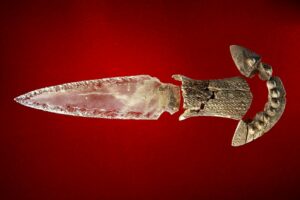When we speak of Egypt, we speak of a time that is ancient and yet continues to impress and affect us today. We marvel at the fact that they managed to reach the top of civilization and managed to build giant pyramids with ingenious methods when the rest of the world was extremely backward and technologically crippled.
The true sense of feminism also developed in Egypt, the only place in ancient history that has a solid foundation for it. Pharaoh’s wife was as respected and revered as Pharaoh himself, and we all know the story of Cleopatra, the infamous and beautiful queen of Egypt who reached heights of power that were impossible for any other woman until the modern world order. However, there is another female figure that is often neglected, and that is Nefertiti.
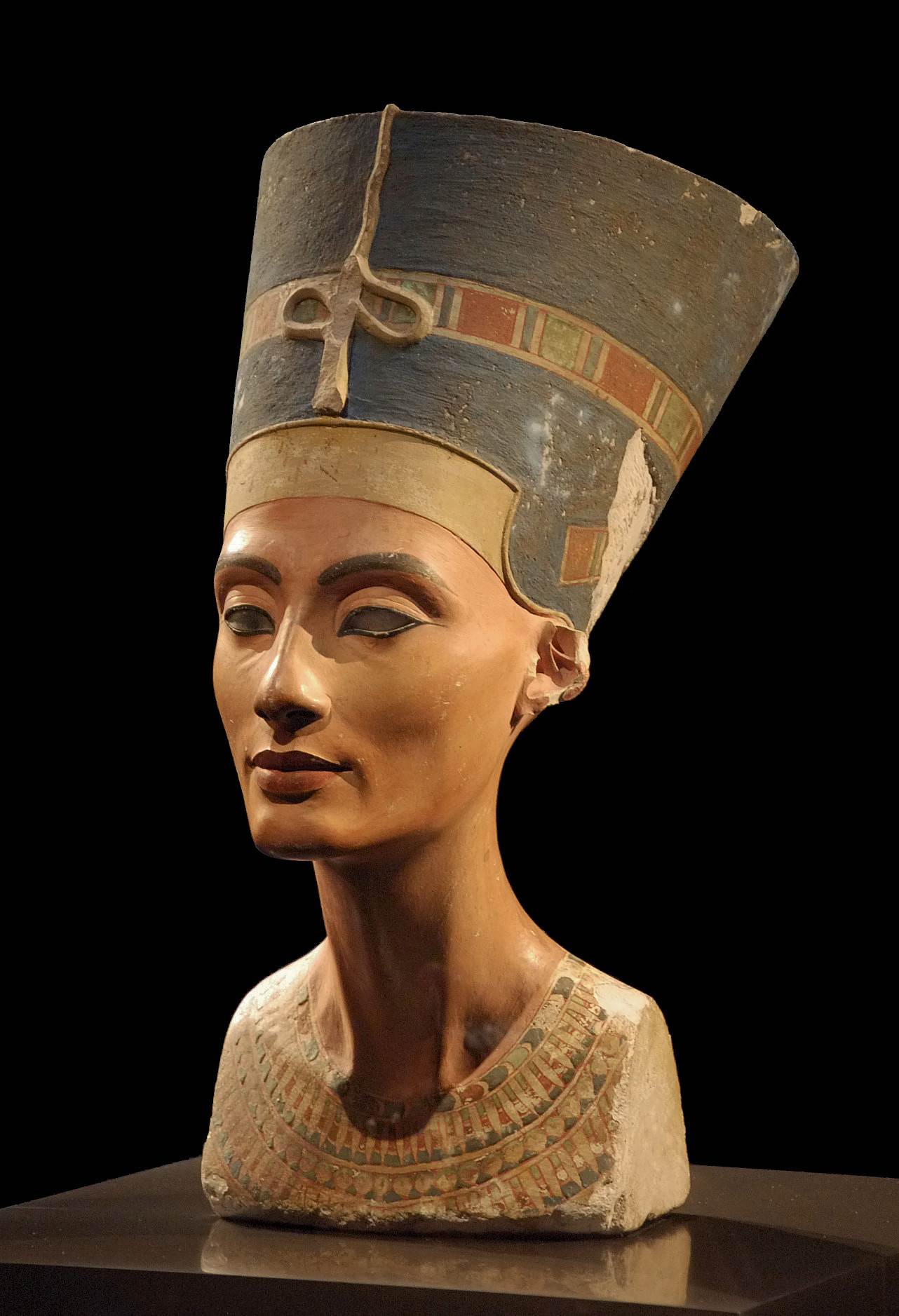
Nefertiti came under the scrutiny of investigators when one of her busts was discovered in the ruins of an artist’s shop in Armenian in 1912. She had the countenance of a strong and beautiful woman and urged investigators to delve into her history.
Nefertiti was the chief consort of the Egyptian Pharaoh Akhenaten (formerly Amenhotep IV), who reigned from approximately 1353 to 1336 BC. Known as the Ruler of the Nile and Daughter of Gods, Nefertiti acquired unprecedented power, and is believed to have held equal status to the pharaoh himself. However, much controversy lingers about Nefertiti after the twelfth regal year of Akhenaten, when her name vanishes from the pages of history.
The origins of Nefertiti
According to the book “Amarna Sunrise: Egypt from the Golden Age to the Age of Heresy”, Nefertiti’s name means “The beautiful woman has come”. Her name is a tribute to her beauty. Nefertiti’s ancestry has often been a source of conflict among scholars, but it is generally accepted that she was the daughter of Ay and Luy. Although the exact year of her marriage to Akhenaten is unknown, it is established that the couple had six daughters and there is credible evidence that the marriage was not simply a contract, but was formed through the existence of genuine love.
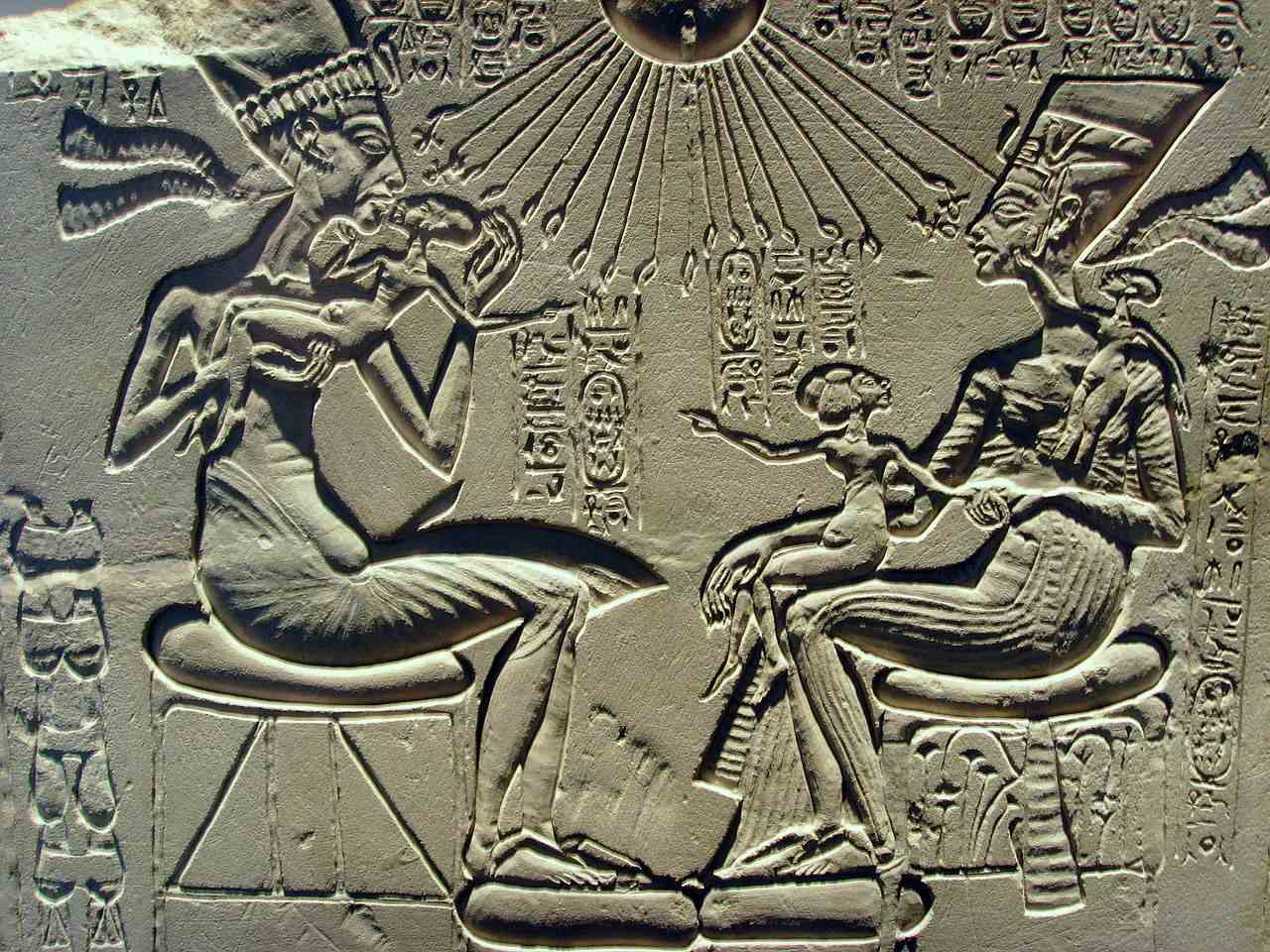
Akhenaten built several temples as a tribute to his wife, and there are many depictions of Nefertiti in them, and her appearance is almost twice that of the pharaoh. She is also seen fulfilling roles that are generally those of the pharaoh, and certain representations show her in battle, destroying her enemies and her throne is decorated with captives as shown in the book “Akhenaten, the heretic king.” Akhenaten also initiated the cult of Aten and gave birth to a religion that was more monotheistic in nature, with the Sun God Aten as the main figure of worship and Akhenaten and Nefertiti as the first humans.
The religious revolution of Nerfertiti and Akhenaten
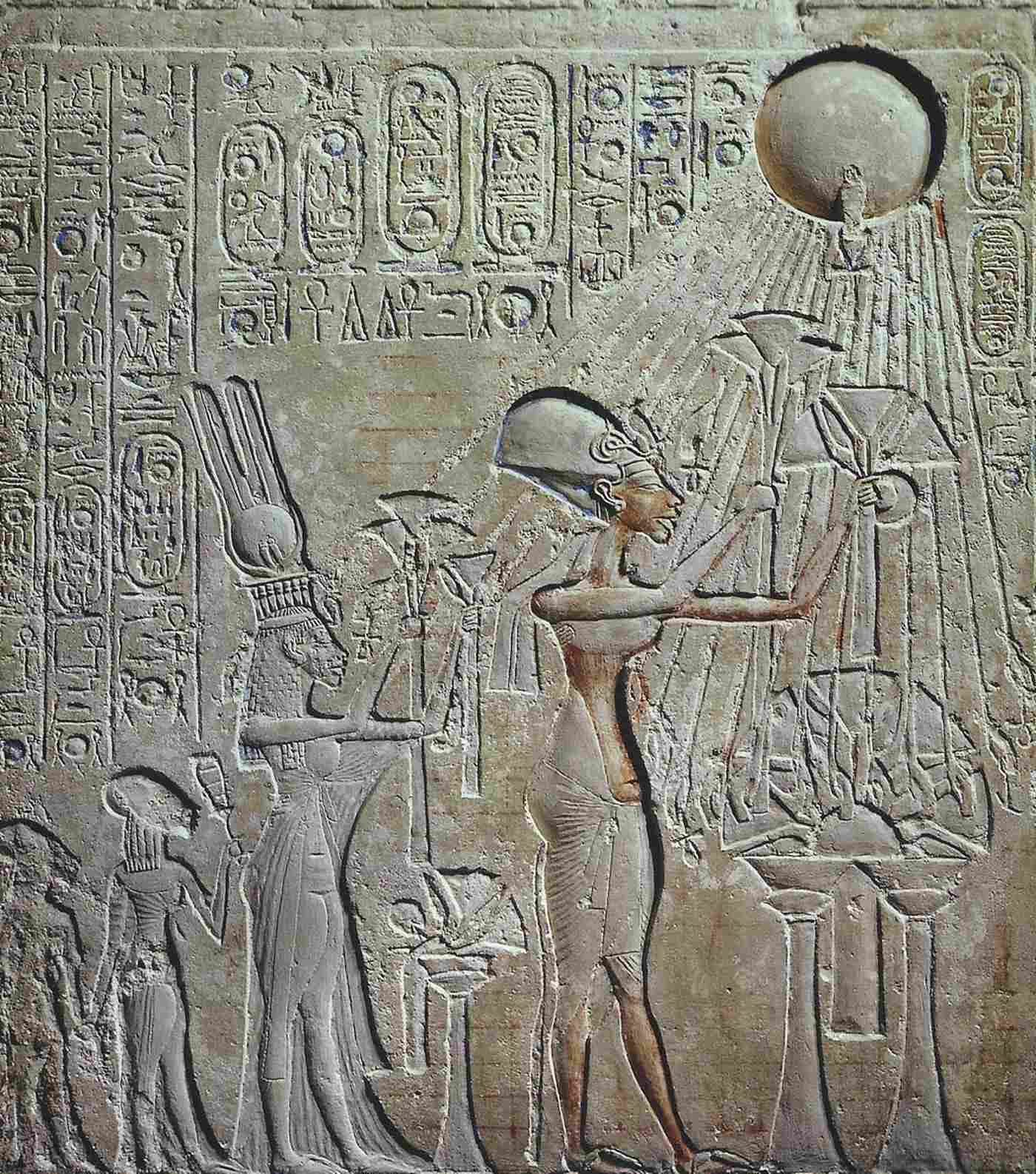
In the fourth year of Amenhotep IV’s reign, the sun god Aten became the dominant national god. The king led a religious revolution closing the older temples and promoting Aten’s central role. Nefertiti had played a prominent role in the old religion, and this continued in the new system. She worshipped alongside her husband and held the unusual kingly position of a priest of Aten. In the new, virtually monotheistic religion, the king and queen were viewed as “a primaeval first pair,” through whom Aten provided his blessings. They thus formed a royal triad or trinity with Aten, through which Aten’s “light” was dispensed to the entire population.
During Akhenaten’s reign (and perhaps after) Nefertiti enjoyed unprecedented power, and by the twelfth year of his reign, there is evidence that she may have been elevated to the status of co-regent, equal in status to the pharaoh himself. She is often depicted on temple walls in the same size as him, signifying her importance, and is shown alone worshipping the god Aten.
Akhenaten had the figure of Nefertiti carved onto the four corners of his granite sarcophagus, and it was she who is depicted as protecting his mummy, a role traditionally played by the traditional female deities of Egypt: Isis, Nephthys, Selket and Neith.
The mysterious disappearance of Nefertiti
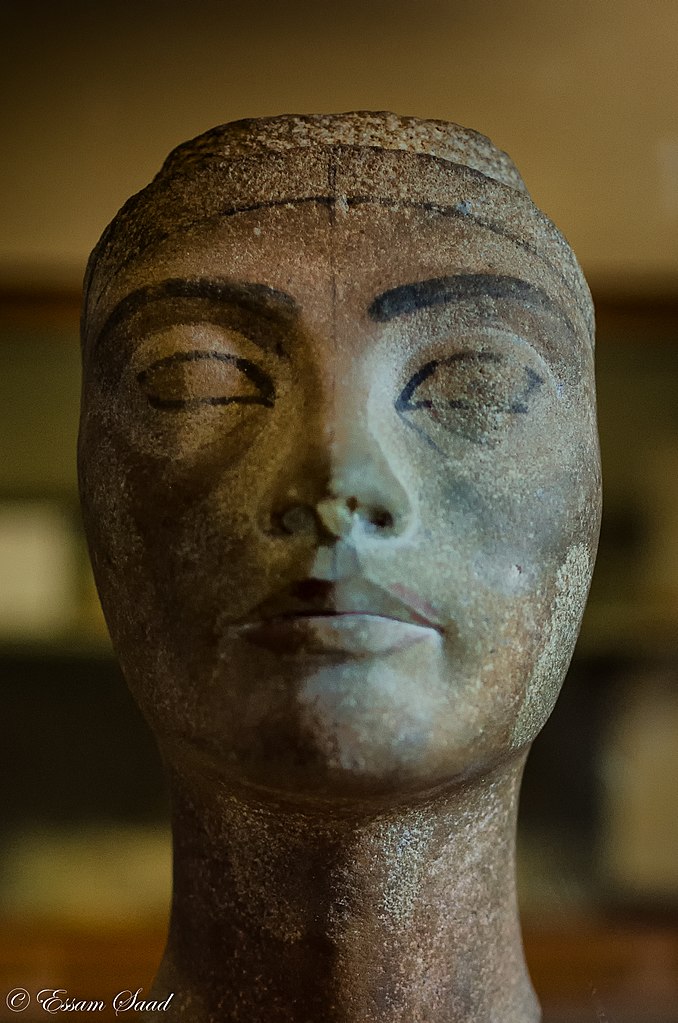
How can such an important character in Amarnian Egypt vanish without a trace? There are several theories about it:
- The first and oldest speak of a sudden death, perhaps by a plague or another type of natural death.
- Others defend that it was a violent death, after which Akhenaten was able to prohibit the name of Nefertiti from being mentioned more.
- There is also speculation about a change in public opinion regarding the pharaoh’s wife, which caused the disappearance of her mention in the monuments.
Shortly after her disappearance from the historical record, Akhenaten took on a co-regent with whom he shared the throne of Egypt. This has caused considerable speculation as to the identity of that person. One theory states that it was Nefertiti herself in a new guise as a female king, following the historical role of other women leaders such as Sobkneferu and Hatshepsut. Another theory introduces the idea of there being two co-regents, a male son, Smenkhkare, and Nefertiti under the name Neferneferuaten (translated as “Beautiful are the beauties of Aten, a Beautiful Woman has come”).
Some scholars are adamant about Nefertiti assuming the role of co-regent during or after the death of Akhenaten. Jacobus Van Dijk, responsible for the Amarna section of the Oxford History of Ancient Egypt, believes that Nefertiti indeed became co-regent with her husband, and that her role as queen consort was taken over by her eldest daughter, Meryetaten (Meritaten) with whom Akhenaten had several children. (The taboo against incest did not exist for the royal families of Egypt.) Also, it is Nefertiti’s four images that adorn Akhenaten’s sarcophagus, not the usual goddesses, which indicates her continued importance to the pharaoh up to his death and refutes the idea that she fell out of favour. It also shows her continued role as a deity, or semi-deity, with Akhenaten.
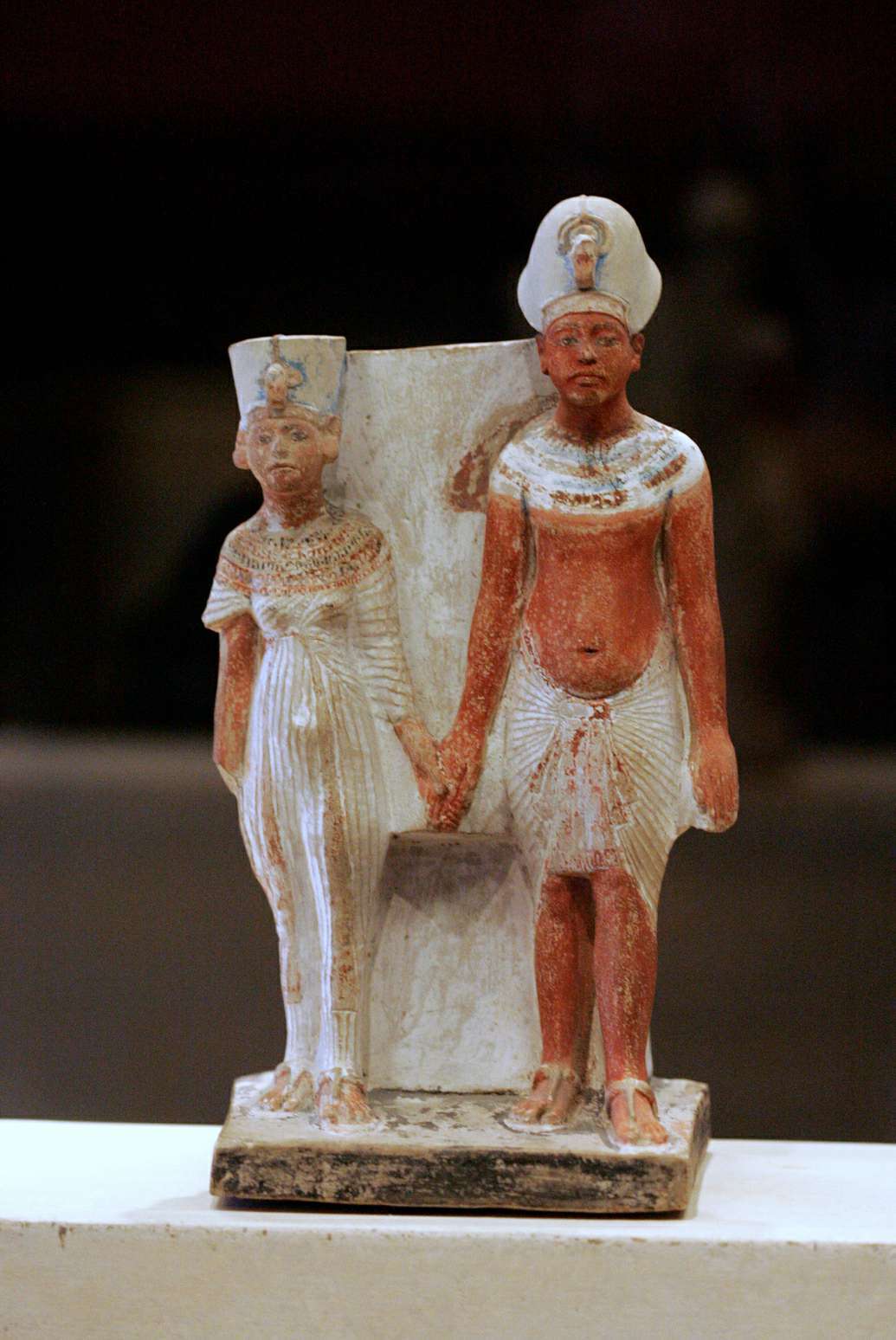
On the other hand, Cyril Aldred, author of Akhenaten: King of Egypt, states that a funerary shawabti found in Akhenaten’s tomb indicates that Nefertiti was simply a queen regnant, not a co-regent and that she died in the regal year 14 of Akhenaten’s reign, her daughter dying the year before.
Some theories hold that Nefertiti was still alive and held an influence on the younger royals who married in their teens. Nefertiti would have prepared for her death and for the succession of her daughter, Ankhesenpaaten, now named Ankhsenamun, and her stepson and now son-in-law, Tutankhamun. This theory has Neferneferuaten dying after two years of kingship and being then succeeded by Tutankhamun, thought to have been a son of Akhenaten. The new royal couple was young and inexperienced, by any estimation of their age. In this theory, Nefertiti’s own life would have ended by year 3 of Tutankhaten’s reign. In that year, Tutankhaten changed his name to Tutankhamun and abandoned Amarna to return the capital to Thebes, as evidence of his return to the official worship of Amun.
As the records are incomplete, it may be that future findings of both archaeologists and historians will develop new theories vis-à-vis Nefertiti and her precipitous exit from the public stage. To date, the mummy of Nefertiti, the famous and iconic Egyptian queen, has never been conclusively found.




